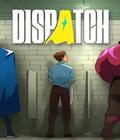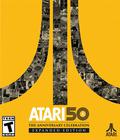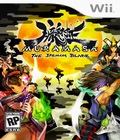The Nintendo Wii isn't completely devoid of hardcore titles, but 2009 marks the point when the system began to get an influx of hardcore, high-profile titles. This year's releases already include The Conduit, The House of the Dead: Overkill, MadWorld and Punch-Out!!, and upcoming titles like Tatsunoku Vs. Capcom and Silent Hill: Shattered Memories show that the console is more than just a place for shovelware and the latest mini-game compilation. Of all of the announced games for the year, one title kept being mentioned over and over again as something that would thrill gamers. From developer Vanillaware, Muramasa: The Demon Blade dazzled people with its initial screenshots, and the first gameplay videos made them fall in love with it even more. Now that it has made its way to North American shores courtesy of Ignition Entertainment, we'll see whether the game matches up to the beautiful visuals or if the graphics are hiding something far too simplistic for anyone's tastes.
The story of Muramasa is actually two separate story lines intertwined into one large arc involving the titular demonic blade. The tale of Monohime is one of possession. A princess who is also a capable sword fighter, Monohime is possessed by a demon early on in the game. Using that body as a vessel, the demon's quest is to use the Muramasa to challenge the gods and become a god himself. Kisuke's tale is a bit different. A ninja with no memory, his quest is to recover his lost memory and use the demon sword to defeat his pursuers once and for al.
The game is played in a side-scrolling action-RPG fashion. Players move in a 2-D plane from area to area, defeating packs of enemies along the way until they reach a boss character. Defeating each boss will grant the player access to another sword, which can then be used to gain entry into another locked part of the map. Even though the game is split up into several different chapters, the flow of gameplay resembles Super Metroid or Castlevania: Symphony of the Night, where players will spend considerable amounts of time finding locked areas only to come back to that same area later with a better weapon to explore the rest of the map. As in those previously mentioned games, the game world in Muramasa is actually quite huge, making you thankful that an automatically drawn map is at your disposal in the game.
At first glance, the title's action elements only occur during combat and resemble just about any side-scrolling hack-and-slash title out there. Combat scenarios only last as long as there are enemies on the screen. At this time, you can slash them to death with your sword and use items to heal yourself if you take damage. Your types of sword slashes will depend on both your on-screen position and the direction of the analog stick once the attack button is pressed, and you'll quickly discover that you can deliver some pretty devastating combos because of this system. Just because you can slash and parry everything, though, doesn't mean you can attack without penalty. Borrowing a mechanic from Dark Cloud, your weaponry has a durability level that gets depleted with every parry and every attack that you're hit with. Once the level is depleted, your weapon breaks, and while you can still attack with a severely underpowered weapon from that point, you will want to switch to another sword in order to continue attacking at full strength. The constant sword switching, along with your moves, make attacking very fun and frantic; the entire battle looks like a beautiful dance, albeit with blood and bodies littering the stage.
The RPG elements aren't only restricted to experience earned during combat. Early on, the game gives you the ability to forge new weaponry to supplement the blades that you already get from boss encounters. Each blade is merely an upgrade to one of the three initial blades, but their special sword arts come in handy during boss fights or battles with hordes of different enemies. Swords are built with a combination of souls that you collect during battles and your own spirit, which is gained through food consumption. To that end, the game introduces you to the art of cooking, which has you combining ingredients to create dishes that increase your spirit and life. In order to prevent you from becoming a glutton, a fullness meter has been added to limit how much of a particular food you can digest during a certain time period. Both of these systems give the game some depth outside of the exploration and combat mechanics, but they aren't forced upon the player. In fact, although it would be a bit more difficult, players can actually complete both game scenarios without cooking or creating any weapons.
There are really only a few complaints about the game, and considering how good everything else is, they can seem pretty minor. For starters, the difference in difficulty levels is extremely noticeable. Enemies aren't that challenging in Normal mode, and even bosses are easily handled by running up and slashing them to death, constantly switching swords in the process. Things change drastically in Hard mode, where enemies are not only tougher but also use their numbers and a bit of strategy to overwhelm the player. It feels tougher than most games, and with Normal feeling like Easy and Hard feeling like Very Hard, there doesn't seem to be a true middle ground to the difficulty. Finally, completionists will lament the fact that the only real way to get everything in the game would be to do multiple playthroughs of both characters. Again, it isn't really a problem at all because the game is thoroughly enjoyable, but those who want everything in one run will never be able to do so.
The controls lack something that almost every Wii game tries to add forcibly: motion controls. Throughout the whole adventure, there is no place in the game where the user is asked to shake, drop, swing or point with either the Wii Remote or the Nunchuk. The need to succumb to the gimmicks of the unique controls isn't here, and the controls are tighter because of this decision. The analog stick on the Nunchuk controls movement, the Z button handles the map, and the C button handles sword switching. The A button slashes, and the B button unleashes the sword art specific to the currently held weapon, while the D-pad takes care of item usage. Again, with no motion controls to worry about, the controls become responsive and the only thing one would have to get used to would be the fact that you jump by hitting up on the analog stick instead of tapping a button. The lack of motion controls also gives the game the opportunity to support both the Classic Controller and GameCube Controller, and both control schemes are perfect for the game.
As alluded to earlier, the graphics are the reason that people paid so much attention to Muramasa in the first place, and with good reason. Fans of the developer have already seen their work on Odin Sphere for the PlayStation 2 a few years back and noted that it was a proper return to form for sprite-based graphics and a natural evolution of where sprite games can go on home consoles. Muramasa proves to be no different as it takes the foundation of what was done in the previous title and adds some more polish. The character sprites are well-detailed and show off plenty of little flourishes that one doesn't expect from characters of that size. Those details are especially noticeable on the larger bosses, since it makes them more distinguishable and, given the fact that some of them are several screens tall, any lack of detail on them would come off as lazy character design.
The art style is accompanied by a very smooth animation system. Everything from running to slashing to idle animations come off smoothly and even rivals some of the animations seen in polygon-based games. The fluid animation system also applies to the levels where the independent moving backdrops and lush, detailed foreground give the environments some tremendous depth. The art style is simply brilliant, with the character's anime stylings mixing together with the more traditional look (reminiscent of feudal-era Japanese paintings) of the backgrounds and enemies; the game easily stands out among all other games on the console, especially since it's displayed in 480p widescreen. In short, this is one of the year's better-looking games on this, or any, console.
The sound nicely matches up with the game's visual beauty. The music is completely orchestral fare with some subtle hints of Japanese instruments. Think of the type of music you would hear in an epic movie, and you have a good sense of what to expect from the game's score. It isn't too overpowering but it does a great job putting you in the mood for the given setting, even if it doesn't always amplify the tempo for fights. Sound effects are crisp, and the sound of sword slashes and the clink of metal entering the scabbard never fail to impress. Those afraid of any English dialogue ruining the mood will be happy to know that the voices contain no English whatsoever. The original Japanese voice-overs are present here and, as expected, help convey emotions properly, letting you know how everyone feels without ever having to read a line of dialogue.
Muramasa: The Demon Blade is a gaming experience that must be played regardless of your console preference. Just about every aspect of the game is excellent, from the graphics to the sound to the amount of gameplay pressed onto the disc. It also shows the gaming community that good 2-D gaming can still be found outside of the portable console realm. All Wii owners who love a good, long adventure owe it to themselves to pick up this game. This especially holds true for those who have been clamoring for more hardcore games; anyone who claims to be a hardcore Wii owner but passes up this game should be stripped of that label.
Score: 9.1/10
More articles about Muramasa: The Demon Blade











 Muramasa: The Demon Blade is a unique, highly stylized action RPG players take on the role of a male ninja or female kunoichi, utilizing their ninja prowess to traverse the clever side-scrolling levels that feature vertical progression as well as the traditional horizontal stage advancement.
Muramasa: The Demon Blade is a unique, highly stylized action RPG players take on the role of a male ninja or female kunoichi, utilizing their ninja prowess to traverse the clever side-scrolling levels that feature vertical progression as well as the traditional horizontal stage advancement.









































